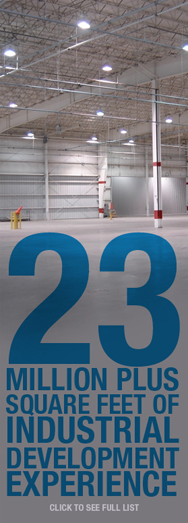A Good Time for Industrial Real Estate Investing?
A great article on Industrial Real Estate. We agree with CBRE. Industrial Real Estate will rebound very fast. The Prologis/AMB merger will create some great opportunity as they reposition their global portfolio. CAP rates will compress as long as interest rates stay low.
To explore the topic of investing in industrial real estate we need to take a look at the sector’s recent performance and the trends that are evolving and emerging in 2011. U.S. industrial investment transaction volume in 2010 was $18.9 billion which represents a 77% improvement over 2009 but it is still 65% below the average 2005-2007 annual sales volume of $53.5 billion.1 A majority of the 2010 volume is represented by one-off or individual transactions as the reemergence of portfolio premiums and sales did not occur until late in the year as several $190 million+ portfolio transactions closed.
Beginning 2011, the industrial market leasing and property level performance metrics are lagging other econometric indicators. According to CBRE Econometric Advisors, the national industrial availability rate dropped 30 basis points by year end 2010 to 14.3%. Although trending in the right direction, this rate is high from a historical perspective and clearly illustrates a level of vulnerability on the part of property owners. The four letter word “spec” is no longer used in industrial real estate circles, which is a positive note for existing owners. No new construction will ensure that a slight uptick in demand will have an immediate impact on availability rates, driving much needed rent appreciation. Industrial demand is traditionally driven by manufacturing, the consumer, and housing starts. Two of the three, manufacturing and consumer spending, appear to be “on the mend”. We are seeing the beginning signs of increasing tenant demand as retailers restock inventory and pockets of manufacturers increase production.
More good news can be interpreted by tracking capital flow into the industrial sector, which continues to be very healthy. A recent example was the CalPERS (California Public Employees Retirements System) announcement to allocate $2 billion into real estate in 2011.2 Their target real estate investments are core assets with stable returns, with less emphasis on asset appreciation. They, like many other investors of industrial product, will use low leverage (50% to 60%) to achieve targeted returns. The other investor groups that are actively pursuing such core industrial investments are led by private equity investors like Blackstone, non-traded REITs like Industrial Income Trust, public REITS like AMB/ProLogis and institutions like RREEF followed by the private investors.3
Click HERE to read the entire article.


